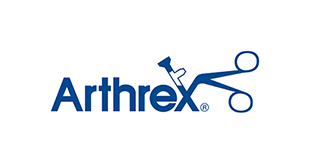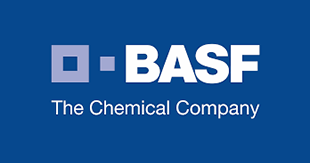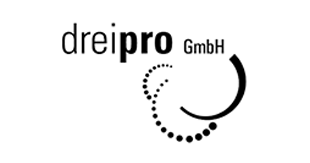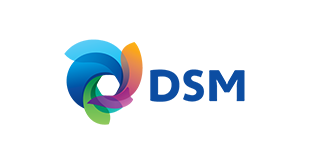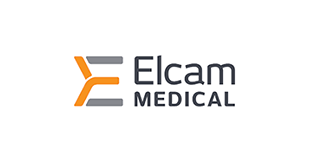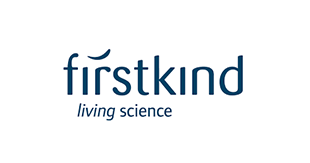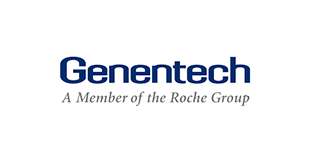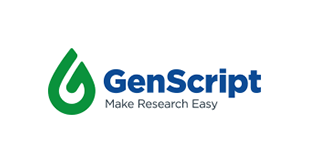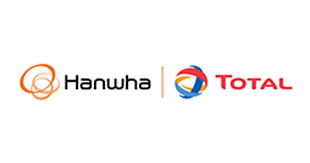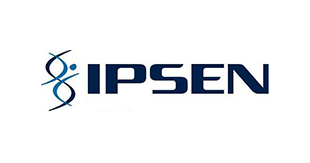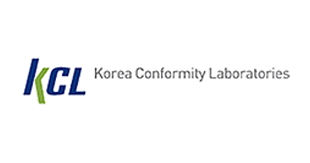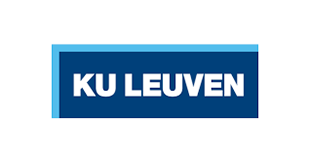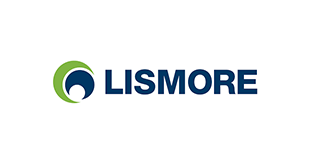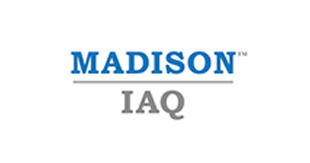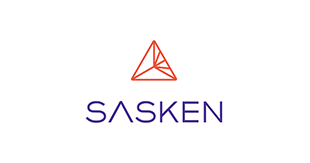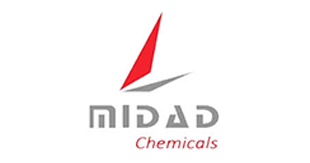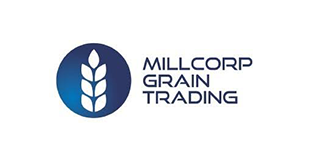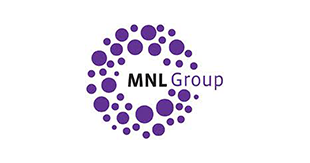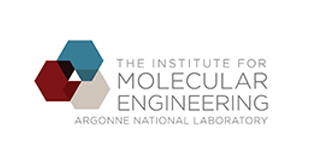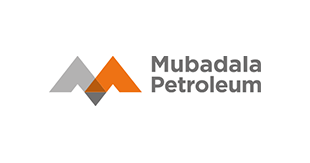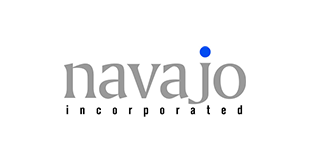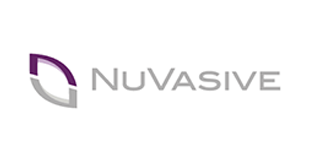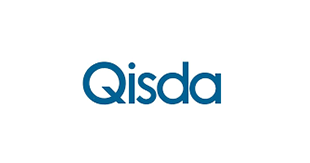Services Provided By Cognitive Market Research Worldwide
List of Services Provided By Cognitive Market Research
Highlights of Services
Industry Specific Market Research Services
Key Features and Services of Subscription Plan:
USPs and Service Differentiator:
Our Services
Market Research company provides mainly two types of reports
-
Syndicate market research studies
-
As a Reseller. In first scenario, we have highly trained research team which works on different markets and domains and form a Syndicate case studies/reports. We also provide customized market research reports on request.
We provide a premium option for our clients of “Subscription”. We provide a yearly subscription; where a dedicated team will be allocated for you. We will prepare a report on the basis of your queries and requirements. These reports will not be made available for other clients.
We provide Consultancy services; where a team of experts will help you grow your business. This team includes a Senior research associate, a marketing expert, and a sales executive.
How can you expand in a crowded market? Do you miss important prospects for innovation or new categories? Our market performance and strategy solutions can assist you in comprehending your brand's position and how to grow, from point-of-sale (POS) tracking to in-store performance audits and forecasting.
The Holy Grail of any organisation is to decipher massive amounts of data, also to discover new opportunities with manufacturer and store partners. We assist you in researching and selecting the right course of action, whether your goal is to increase the effectiveness of a certain merchant or to optimise your pricing, promotion, or assortment.
To survive and succeed in a market which is always changing, it is essential to develop the ability to quickly forecast and adapt to market changes. Clients benefit from Cognitive market research's ability to predict and capitalise on disruption, determine where their industry is headed, and pinpoint their best growth possibilities.
We combine in-depth human comprehension with data-driven predictions to scale up activation, measure business effect, and foresee dangers, opportunities, and cultural shifts.
The difficulty of using common metrics to inform crucial strategic decisions is one of the issues firms that want to steer strategy by tracking client connections with their brand face. We provide clients with highly individualised monitoring and analytics that takes into consideration their unique market environment, brand history, and strategic ambitions as an alternative to brand measurement systems that seeks to apply a universal framework across industries and market structures.
Opportunity Assessment has grown to be one of the most crucial strategic functions of any organisation in an era of constrained investment resources and high success standards. Our industry teams consult with clients continuously on an as-needed basis at every stage of the process to assist them to decide how much research is necessary to make an informed choice in any circumstance.
In this fast moving world and continuously fluctuating global economical and various political factors, companies across the world need to stay updated with each and every minute detail on various factors which may directly or indirectly impact the growth of the company in particular sector.
In order to ensure that you stay updated with all market activities taking place every minute, we offer special service called, “Round The Clock Assistance”. This subscription allows your company to obtain every details taking place in your industry.
Key Advantage of Round The Clock Assistance Service:
- 24*7 research assistance throughout the year
- Regular updates on quarterly basis
- Special pricing access to premium content
- Pre release access to prime content
- Customized solutions at no additional cost
At Cognitive Market Research we offer a unique and customized service, “Monthly and Quarterly Market Analysis”. This service offers detailed analysis regular update on monthly and quarterly basis in various industries. Though we offer this service for most of the industries, our special focus is on chemicals and materials sector. This sector being highly dynamic, it is of prime importance for all industry participants to have quick and credible inputs for all major activities taking place in the market. This analysis offers a cutting edge to subscriber to take vital decisions for all major parameters across the value chain such as raw material procurement, distribution channel, inventory, production, etc.
Our monthly market analysis services help clients to get detailed information on below pointers,
- Major market activities taking place on global, regional as well as country level
- Provides weekly price trends for product of your interest on global, regional as well as country level
- Various business strategies implemented by major players such as mergers, acquisitions, product launches and divestment on global, regional as well as country level
Key Benefits of availing this service:
- Easy access of MS Excel format
- Minimal cost of USD 215 per month
- Shortest possible delivery timeline
Biodegradable Stents the Future of Stent Market
Request for more Relevant Case Study that suits your business.
Detailed Survey and Assessment of Automotive Wheels Market
Request for more Relevant Case Study that suits your business.
In-depth Analysis and Market Assessment of Healthcare Consulting Services Market
Request for more Relevant Case Study that suits your business.
By providing a strategic framework, breakeven analysis enables our audience to evaluate and optimize their financial performance. Companies obtain vital information regarding their operational efficiency and profitability thresholds by ascertaining the point at which total costs equal total revenue. This analysis functions as a fundamental component of strategic decision-making, facilitating organizations in establishing attainable objectives, assessing pricing tactics, and efficiently allocating resources. Moreover, breakeven analysis enables organizations to pinpoint opportunities for cost management and efficiency enhancement, thereby stimulating financial expansion. By comprehending their breakeven point, businesses can develop proactive risk management strategies and evaluate their financial resilience. Establishing realistic objectives grounded in breakeven analysis promotes responsibility and directs endeavors toward maintaining long-term profitability. Amidst a dynamic business environment characterized by razor-thin profit margins and intense competition, breakeven analysis serves as a fundamental tool for strategic implementation and financial planning, aiding organizations in overcoming obstacles and capitalizing on growth prospects.
Comparable company analysis (CCA) provides significant insights to business organizations regarding their valuation and competitive standing within the industry domain. Through the analysis of comparable companies' valuation multiples and critical financial metrics, organizations can discern regions of comparative strength and weakness, thereby enhancing the quality of their strategic decision-making. CCA is an indispensable component in the process of mergers and acquisitions (M&A), enabling organizations to assess prospective targets and engage in advantageous negotiations. Moreover, it facilitates investor relations endeavors by providing a quantitative structure for conveying valuation narratives to stakeholders, thus stimulating investor support and interest. Furthermore, CCA facilitates the optimization of capital allocation decisions by identifying investment prospects that offer the greatest potential for returns. In general, CCA enables organizations to expand shareholder value, enhance decision-making processes, and effectively navigate the intricate dynamics of the competitive business landscape
Cost-benefit analysis (CBA) provides organizations with substantial advantages through the implementation of a systematic framework for resource allocation and decision-making. By employing CBA, organizations are able to methodically assess the prospective expenses and advantages of various courses of action. This empowers them to formulate well-informed decisions that are in line with their strategic goals and optimize value. Critical business analysis (CBA) assists organizations in prioritizing investments and allocating resources to projects or initiatives that yield the greatest return on investment (ROI) by quantifying the financial ramifications of different alternatives. In addition, CBA empowers organizations to evaluate and alleviate potential risks associated with various projects or decisions, thereby facilitating risk management. Furthermore, CBA functions as a highly beneficial instrument for assessing performance, enabling organizations to discern areas that require enhancement by comparing realized costs and benefits to those anticipated in the analysis. Additionally, CBA improves transparency and communication with stakeholders by elucidating the reasoning behind decisions and encouraging them to participate in substantive dialogues. CBA enables organizations to make sound judgments and adhere to regulatory requirements. Cost-benefit analysis (CBA) provides organizations with substantial advantages through the implementation of a systematic framework for resource allocation and decision-making. By employing CBA, organizations are able to methodically assess the prospective expenses and advantages of various courses of action. This empowers them to formulate well-informed decisions that are in line with their strategic goals and optimize value. Critical business analysis (CBA) assists organizations in prioritizing investments and allocating resources to projects or initiatives that yield the greatest return on investment (ROI) by quantifying the financial ramifications of different alternatives. In addition, CBA empowers organizations to evaluate and alleviate potential risks associated with various projects or decisions, thereby facilitating risk management. Furthermore, CBA functions as a highly beneficial instrument for assessing performance, enabling organizations to discern areas that require enhancement by comparing realized costs and benefits to those anticipated in the analysis. Additionally, CBA improves transparency and communication with stakeholders by elucidating the reasoning behind decisions and encouraging them to participate in substantive dialogues. CBA enables organizations to make sound judgments and adhere to regulatory requirements.
By providing a systematic and organized framework for making decisions, decision analysis predominantly benefits its audience in numerous ways. By integrating quantitative analysis and evaluating uncertainties, individuals can enhance their knowledge and comprehension of prospective consequences, thereby enabling them to make informed decisions. This not only elevates the standard of decision-making but also instils a greater sense of assurance in the selected course of action. Furthermore, through the identification and mitigation of potential risks, decision analysis facilitates effective risk management by ensuring that decisions are in line with strategic objectives and minimize potential losses. Moreover, by utilizing decision analysis, readers can optimize the allocation of resources, establish investment priorities, and strengthen stakeholder alignment. In general, decision analysis provides readers with the knowledge and instruments required to navigate intricate decision environments, formulate strategic decisions, and achieve success in their pursuits.
DuPont research helps our readers comprehend a company's financial performance. DuPont analysis gives insights beyond financial measures by breaking down return on equity (ROE) into profitability, efficiency, and leverage. DuPont analysis benefits readers in several ways. First, it illuminates a company's ROE drivers. Readers can identify a company's operational and financial strengths and weaknesses by studying profitability, efficiency, and leverage individually. Understanding helps target and improve decision-making. Second, DuPont analysis helps readers make strategic judgments. DuPont analysis helps readers identify financial performance-boosting measures like enhancing profitability, operational efficiency, and leverage management. Our readers may improve their financial management, grow sustainably, and confidently navigate today's business world by using DuPont analysis.
Qualitative analysis offers readers enhanced comprehension, nuanced insights, and contextualized information pertaining to a wide range of subjects. Qualitative analysis provides a lens through which to examine the entirety of the human experience, encompassing its diversity and complexity, whether it be complex social issues, consumer behavior, or organizational dynamics. Through an exploration of the "why" that underlies the "what," qualitative analysis enables readers to comprehend the fundamental attitudes, motivations, and behaviors that influence societies, communities, and individuals. Furthermore, qualitative research frequently reveals viewpoints and voices that might be disregarded or marginalized in quantitative investigations, thereby promoting readers' empathy, comprehension, and inclusiveness. Qualitative analysis ultimately enables readers to develop a more profound comprehension of human phenomena, gain a more nuanced understanding of the world around them, and appreciate the richness and diversity of human experiences.
In numerous ways, providing services associated with ratio analysis can be of great benefit to our audience. To begin with, it provides individuals with the necessary information to determine well-informed investments through precise evaluations of firms' financial well-being and operations. This has the potential to enhance returns and mitigate risks. Furthermore, through the identification of potential financial distress or insolvency risks in companies, readers can proactively mitigate risk, safeguard their investments, and reduce losses. Furthermore, knowledge of these analytical methods facilitates strategic planning and decision-making for business owners and managers, enabling them to establish a benchmark for the financial performance of their organization, pinpoint areas that require enhancement, and formulate growth and profit-oriented strategies. In conclusion, these tools can be employed by financial institutions and lenders to analyze credit risk, thereby empowering them to render well-informed lending judgments and reduce the likelihood of default. In general, by providing these services, we furnish our audience with invaluable resources and perspectives to proficiently traverse the intricate realm of finance and investment.
In numerous ways, providing services associated with ratio analysis can be of great benefit to our audience. To begin with, it provides individuals with the necessary information to determine well-informed investments through precise evaluations of firms' financial well-being and operations. This has the potential to enhance returns and mitigate risks. Furthermore, through the identification of potential financial distress or insolvency risks in companies, readers can proactively mitigate risk, safeguard their investments, and reduce losses. Furthermore, knowledge of these analytical methods facilitates strategic planning and decision-making for business owners and managers, enabling them to establish a benchmark for the financial performance of their organization, pinpoint areas that require enhancement, and formulate growth and profit-oriented strategies. In conclusion, these tools can be employed by financial institutions and lenders to analyze credit risk, thereby empowering them to render well-informed lending judgments and reduce the likelihood of default. In general, by providing these services, we furnish our audience with invaluable resources and perspectives to proficiently traverse the intricate realm of finance and investment.
The provision of data analysis as a service presents a multitude of benefits for organizations. First and foremost, it provides decision-makers with indispensable insights obtained through comprehensive data analysis, thereby empowering them to make well-informed decisions that are in line with the goals of the organization. This service may prove to be especially advantageous for organizations that do not possess internal data analysis expertise or resources. Organizations can gain access to sophisticated analytical tools and techniques without devoting significant initial capital to infrastructure or personnel by delegating this responsibility to specialized service providers. Further, by eradicating the requirement for organizations to maintain costly software licenses or employ full-time data analysts, data analysis as a service can also result in financial savings. In addition, through the establishment of collaborations with seasoned service providers, organizations can leverage their specialized knowledge and guarantee the optimal execution of data analysis endeavors. In essence, data analysis as a service enables organizations to leverage the potential of insights derived from data in order to improve decision-making processes, streamline operations, and propel business achievements.
Providing vertical analysis as a service can yield substantial advantages for organizations seeking a more profound understanding of their financial performance and well-informed decision-making. By delegating vertical analysis to specialized professionals, one can benefit from their proficiency in accounting principles and financial statement analysis, which guarantees precise interpretation of financial data. Furthermore, this methodology enables organizations to optimize their time and resources while concentrating on fundamental activities, all the while harnessing the expertise of external professionals in comprehensive financial analysis. Furthermore, the impartial viewpoint offered by external service providers, free from internal biases, uncovers insights that might otherwise remain hidden within the organization. This, combined with the comprehensive insights derived from the integration of financial analysis, market research, and industry benchmarks, empowers organizations to evaluate their performance against industry standards, identify areas for improvement, and make strategic decisions in response to market dynamics. The tailored solutions and practical suggestions provided by these providers further enhance the decision-making process, fostering long-term expansion and financial success.
Service Part Service-based firms use analysis of variances (ANOVA) to optimize service delivery, customize products, and optimally allocate resources. By doing ANOVA on customer feedback or service performance indicators, firms can uncover service quality changes between segments or periods, identifying opportunities for improvement and resource reallocation. This data also lets companies adjust services to different client segments' needs and preferences, enhancing customer happiness and loyalty. ANOVA also enables service firms to evaluate and share best practices by comparing team, department, and branch performance. ANOVA can also reveal service demand and consumer behavior trends to help firms forecast and plan for future needs and manage resources. In a competitive market, ANOVA helps service businesses improve service quality, customer satisfaction, and operational efficiency.
Service Part The services of base year analysis and secondary market research provide business owners with a strong sense of dependability by virtue of their dedication to precise data and all-encompassing perspectives. By utilizing data from reputable sources, these services guarantee that the information utilized for analysis is dependable and indicative of the current state of the market. Business proprietors can place their confidence in the historical outlook furnished by base year analysis, which empowers them to comprehend industry-wide long-term trends, cycles, and patterns. The historical backdrop is of immense value in facilitating well-informed decision-making, forecasting changes in the market, and adjusting strategies accordingly. Additionally, secondary market research offers an abundance of comprehensive insights, encompassing competitor analysis, consumer behavior trends, regulatory updates, emerging technologies, and market size. The extensive range of data enables entrepreneurs to acquire a comprehensive understanding of the market environment, recognize potential avenues for expansion, evaluate challenges posed by competitors, and formulate strategic choices with assurance. In general, the dependability of base year analysis and secondary market research services provides business proprietors with the means to effectively navigate intricacies, minimize risks, and seize market opportunities.
Service Part By integrating secondary market research with comparative market analysis (CMA), readers can get a comprehensive understanding of the real estate industry, enabling them to make well-informed decisions. By understanding property valuation, market trends, and competitive dynamics, individuals can adeptly maneuver through the multifaceted processes associated with purchasing, selling, or investing in real estate. The blog provides you, whether you are an experienced investor pursuing emerging opportunities or a prospective homeowner aiming to price your property competitively, with the knowledge and tactics required to maximize your success in the ever-changing real estate industry.
Service Part Critical path analysis (CPA) provides organizations in all industries with substantial advantages. Through the effective allocation of resources, CPA guarantees the seamless progression of projects, thereby preventing superfluous setbacks and optimizing output. This resource allocation optimization is especially vital for organizations that have limited funds and personnel, as it enables them to maximize their expenditures and workforce. Furthermore, by prioritizing tasks along the critical path—which are crucial for meeting project milestones and delivering results on time—CPA expedites the completion of projects. By doing so, the organization not only improves client satisfaction but also fortifies its standing in terms of dependability and effectiveness. Moreover, CPA functions as an invaluable instrument for risk management through the identification of potential obstacles and dependencies that can affect project schedules. Organizations can guarantee project progress by proactively mitigating delays and disruptions through the implementation of measures to resolve these risks. In general, the application of critical path analysis enables organizations to enhance the efficiency of their project management procedures, optimize the allocation of resources, and attain higher levels of success in the timely and cost-effective completion of projects
Service Part This comprehensive cross-sectional analysis and secondary market research solution benefits business owners in many industries. First, it helps owners comprehend market trends, rival strategies, and customer behavior to make informed decisions based on market realities and opportunities. Owners may differentiate their offerings and position their firms with educated decision-making, giving them a competitive edge. This solution also identifies and mitigates market, regulatory, and competitive risks. Business owners can design and implement risk-reduction and performance-boosting measures. The insights provided by this service help owners explore new markets, extend product lines, and find strategic collaborations. Another benefit is that owners can use cross-sectional analysis and secondary research to maximize budgeting, staffing, and technology investments. This optimization maximizes resource efficiency and ROI. This service gives business owners actionable insight, strategic assistance, and a competitive edge to develop, innovate, and succeed in today's dynamic business environment.
Service Part Business owners benefit greatly from descriptive statistics analysis services, which help them make challenging decisions. These services enable business owners to make data-driven decisions by offering clear and simple reports. By analyzing sales performance, customer happiness, and market trends, business owners can assess their operations and improve. Descriptive statistics analysis helps business leaders remain ahead of the curve and grasp new opportunities by providing deeper insights into market dynamics, customer behavior, and rival strategy. Descriptive statistics can also help business owners mitigate risks and predict problems, protecting their companies from unexpected disruptions. Descriptive statistics analysis services help businesses succeed by providing analytical tools and insights for strategic planning and decision-making.
Service Part This service, which combines electronic data gathering analysis (EDGA) and secondary market research, can be incredibly beneficial to business owners in several impactful ways. Firstly, it empowers informed decision-making by providing access to a vast array of data and insights. Business owners can gain a deeper understanding of market trends, customer preferences, competitor strategies, and industry dynamics. This comprehensive knowledge base serves as a solid foundation for strategic planning and enables business leaders to make decisions backed by data-driven insights, reducing the risks associated with uncertainty. Secondly, this service helps optimize marketing strategies by leveraging EDGA to analyze customer behavior, sentiment, and engagement across various digital platforms. By understanding how customers interact with their brand online, business owners can tailor marketing campaigns, optimize ad spend, and pinpoint new opportunities for customer acquisition and retention. This targeted approach not only improves the effectiveness of marketing efforts but also enhances customer satisfaction and loyalty.
Financial statement analysis furnishes business proprietors with invaluable insights through an exhaustive evaluation of their organization's financial well-being and market standing. By scrutinizing financial statements, business proprietors acquire a profound comprehension of their liquidity, profitability, and operational efficacy. This knowledge empowers them to formulate well-informed judgments concerning the allocation of resources, investment approaches, and financial oversight. Furthermore, by offering vital insights into consumer behavior, competitor analysis, and industry trends, market research assists entrepreneurs in recognizing potential avenues for expansion, forecasting market changes, and maintaining a competitive edge. Through the integration of these analyses, business proprietors are able to formulate strategic plans that are in accordance with the actualities of the market, enhance operational efficiency, and foster enduring expansion for their organizations. In general, this service provides business proprietors with the information and resources necessary to effectively navigate intricate financial environments and exploit developing prospects within their respective sectors.
Service Part Fourier analysis helps businesses improve operations, marketing, financial forecasts, and product creation. Businesses may optimize operations and save downtime by analyzing equipment performance patterns and scheduling maintenance via Fourier analysis. Fourier analysis reveals frequency patterns in sales data or customer engagement indicators, helping marketers optimize marketing campaigns for optimal engagement and ROI. By finding cyclic patterns and seasonal swings in asset prices or economic indicators, Fourier analysis helps financial professionals foresee trends and make informed investment decisions. Fourier analysis can also discover usage patterns and trends in feedback data or performance indicators to improve product development. By using Fourier analysis in these areas, businesses can obtain insights, make data-driven decisions, and grow and compete in today's dynamic market.
Service Part Strategic planning and performance improvement are structured with this service, which benefits organizations. Strategic alignment is achieved by aligning present capabilities with long-term goals, improving resource allocation, and clarifying organizational direction. Second, it identifies inefficiencies or gaps in processes, systems, or resources, allowing businesses to implement focused interventions to increase operational efficiency. Gap analysis also helps firms establish contingency plans to manage risks by proactively identifying vulnerabilities. Another benefit is that firms can use analysis to make data-driven resource allocation, investment, and strategy decisions. Gap analysis also helps companies stand out, seize market opportunities, and stay relevant in a changing business environment. Finally, it promotes continuous improvement by encouraging regular assessment, identification of areas for improvement, and remedial action, assuring ongoing growth and development.
Service Part When provided as a service to organizations, horizontal analysis is an indispensable instrument for evaluating financial well-being and operational effectiveness. Through a rigorous examination of financial data trends and patterns spanning various reporting periods, this analysis provides organizations with valuable insights pertaining to their cost management strategies, revenue growth, and operational efficiency. By conducting a comprehensive analysis to identify their strengths and weaknesses, organizations can enhance their decision-making processes regarding investment priorities, strategic planning, and resource allocation. Furthermore, by conducting horizontal analysis, organizations are able to assess their performance in relation to competitors and industry benchmarks, which offers significant insight into their market standing and facilitates the identification of potential areas for enhancement. In the current competitive business environment, organizations can achieve optimal performance, enhance financial management practices, and attain sustainable growth through the utilization of horizontal analysis as a service.
Service Part This service affords business proprietors substantial advantages through the provision of data-driven insights that support well-informed decision-making. Through the utilization of hypothesis testing in market research, entrepreneurs are able to formulate strategic decisions supported by empirical data, as opposed to exclusively depending on intuition. This methodology improves the precision of the decision-making process and raises the probability of achieving favorable results. In addition, by assessing the potential results of various strategies prior to their execution, hypothesis testing empowers business proprietors to reduce risks. By conducting thorough analysis to identify and address potential challenges or obstacles, organizations can reduce the probability of incurring expensive errors. In addition, hypothesis testing facilitates the optimization of resource allocation through the guidance of investments toward endeavors that have undergone empirical validation and demonstrated favorable outcomes. This practice guarantees the effective allocation of resources, thereby optimizing the return on investment and fostering sustainable development. In general, the utilization of hypothesis testing in business research provides business proprietors with the ability to enhance decision-making processes, mitigate risks, and optimize resource allocation. These outcomes culminate in enhanced market performance and competitiveness.
Service Part Business proprietors can rely on industry life cycle analysis and secondary market research as indispensable resources that provide a strategic framework for navigating the intricate dynamics of their specific sectors. Business proprietors can make well-informed decisions pertaining to strategic planning, resource allocation, risk management, and market positioning by acquiring knowledge of the industry's life cycle stage. These services assist in recognizing opportunities for expansion, anticipating obstacles, and developing proactive strategies to maintain competitiveness. During the growth phase, business proprietors may allocate resources towards strategies such as augmenting market penetration, innovating products, and acquiring customers. On the contrary, cost optimization, process efficiency, and customer retention strategies might be prioritized during the maturity phase. Moreover, industry analysis facilitates the identification of developing trends, disruptive technologies, and regulatory changes, thereby empowering entrepreneurs to modify and pioneer their products or services in response to fluctuating market requirements. In general, by utilizing industry life cycle analysis and secondary market research, business proprietors are enabled to formulate agile, data-informed decisions that foster enduring success and sustainable expansion.
Service Part Input-output analysis offers business proprietors profound advantages by furnishing indispensable insights and instruments to streamline operations and stimulate expansion. By comprehending the interconnections that exist throughout their supply chains, organizations can achieve greater efficacy, cut costs, and mitigate risks. Furthermore, input-output analysis facilitates the identification of industries whose products or services are in high demand, allowing businesses to expand into specific markets and diversify their revenue streams. Furthermore, through the utilization of scenario modeling, organizations can evaluate the possible consequences of external variables and formulate preemptive approaches to alleviate risks. By employing this analytical methodology, business proprietors are enabled to make well-informed decisions, efficiently allocate resources, and attain a competitive edge in ever-changing market landscapes. In general, input-output analysis enhances the processes of strategic planning, allowing organizations to effectively navigate intricacies, seize advantageous circumstances, and attain long-term, sustainable expansion.
Service Part Business proprietors derive substantial advantages from this service as it furnishes them with the necessary resources and perspectives to formulate well-informed investment choices. By utilizing mean-variance analysis, business proprietors are able to evaluate the risk-return characteristics of different investment alternatives. This enables them to allocate capital more strategically and optimize investment portfolios to achieve the highest possible returns. Business owners can gain significant advantages and capitalize on favorable market conditions by incorporating market research into their decision-making process. This enables them to acquire valuable insights regarding market trends, industry dynamics, and emerging opportunities, thereby facilitating a competitive advantage. Moreover, through the implementation of risk mitigation and diversification strategies, business proprietors can ensure the security of their investments and safeguard the financial viability of their organizations. In conclusion, business proprietors can generate enduring value for their stakeholders, foster business expansion, and improve their financial performance by harnessing the analytical functionalities of this service.
Service Part Monte Carlo simulation aids business owners in many ways. First, it provides a solid risk assessment and management framework to help owners identify, evaluate, and minimize risks. A proactive risk management approach decreases uncertainty and boosts decision-making confidence. Second, Monte Carlo simulation generates probabilistic forecasts and scenario evaluations for financial planning and decision-making. These data can help business leaders optimize budgeting, prioritize investments, and strategically allocate resources, improving financial performance and resource use. Monte Carlo simulation also identifies inefficiencies, bottlenecks, and improvement possibilities to optimize operations and processes. Simulating operational scenarios helps owners streamline procedures, cut expenses, and boost productivity. Monte Carlo simulation incorporates market data, consumer insights, and competitive dynamics to improve strategy creation and market analysis. This lets entrepreneurs make data-driven decisions, anticipate industry trends, and create competitive strategies to expand and succeed.
Service Part Organizations benefit from predictive analysis in several operational areas. It first provides actionable insights from historical data and prediction modeling to aid decision-making. Predictive analysis helps companies predict market trends, allocate resources, and find development possibilities. Second, predictive analysis helps firms detect and minimize risks before they escalate. Organizations can prevent financial losses and reputational damage by evaluating historical patterns and risk factors. Furthermore, predictive analysis helps firms improve customer engagement and happiness by predicting customer behavior and preferences. Organizations can build client loyalty by customizing products, services, and marketing. Predictive analysis gives companies the knowledge and foresight they need to innovate, manage complex business situations, and stay ahead in today's changing market
Service Part Process value analysis offers business proprietors practical insights that can be utilized to enhance profitability, streamline operations, and optimize efficiency. By implementing Process Value Analysis (PVA), entrepreneurs can detect and rectify inefficiencies, minimize wastage, and augment the value that is provided to clients. Through the systematic evaluation of processes and the integration of findings derived from primary and secondary research, entrepreneurs acquire a holistic comprehension of the intricacies of their markets and operations. This empowers them to make data-based decisions, predict market trends, and exploit opportunities for expansion. PVA ultimately provides business proprietors with the means to strengthen their competitive stance, elevate client contentment, and attain enduring prosperity within the ever-evolving contemporary business landscape.
Service Part Quantitative analysis helps companies improve decision-making, operations, and profitability. First, it gives organizations strong numerical data insights to make data-driven decisions. Organizations can find market possibilities, predict customer preferences, and improve resource allocation by examining dataset trends, patterns, and correlations. Second, quantitative analysis quantifies and evaluates risks, aiding risk management. Statistical modeling and scenario analysis help firms identify and reduce risks, preventing financial losses and market volatility. Quantitative analysis identifies inefficiencies and optimizes processes, improving operational efficiency. By examining KPIs and measurements, firms can streamline processes, cut expenses, and boost productivity. Quantitative analysis enhances strategic planning and forecasting with precise predictions and projections. Quantitative analysis helps companies plan by predicting market trends, sales, and pricing strategies. Quantitative analysis helps firms make educated decisions, obtain a competitive edge, and grow and profit in today's dynamic business climate.
Service Part Utilizing random factor analysis to transform unprocessed data into actionable insights enhances data interpretation. Detecting latent patterns and interconnections in intricate datasets imparts a sophisticated comprehension of market dynamics. Business proprietors are empowered to make well-informed decisions with respect to resource allocation, product development, and marketing strategies as a result of this enhanced comprehension. Additionally, random factor analysis improves strategies for segmentation and targeting. Through the process of segmenting customers according to shared characteristics or preferences, entrepreneurs can customize their products and communications to suit the particular requirements of each group, thereby enhancing customer engagement and satisfaction.
Service Part Business proprietors find regression analysis to be an indispensable instrument due to its capability of forecasting future outcomes, assessing performance, efficiently allocating resources, mitigating risks, and providing guidance for strategic planning endeavors. Regression analysis facilitates proactive decision-making and strategic planning by enabling proprietors to forecast critical metrics, including sales, demand, and market trends, through the analysis of historical data. Additionally, regression analysis assists proprietors in assessing the efficacy of their investments and strategies through the identification of the determinants that influence the performance of the business. This facilitates resource optimization by directing investments towards endeavors that offer the greatest potential for return on investment. In addition, risk management is facilitated by regression analysis, which identifies potential threats and empowers proprietors to formulate strategies for their mitigation. Through the utilization of regression analysis, entrepreneurs are empowered to formulate decisions based on data that are in accordance with market trends, customer inclinations, and enduring business goals. This, in turn, fosters expansion and triumph in a fiercely competitive commercial environment.
Service Part Risk analysis provides business proprietors with invaluable advantages as it enables them to navigate uncertainties and arrive at well-informed decisions effectively. To begin with, it facilitates risk reduction through the identification of potential hazards spanning multiple facets of the organization, such as finances, operations, and reputation. Through a comprehensive comprehension of these risks, proprietors are able to proactively execute countermeasures, thereby protecting the company from possible disruptions and losses. Additionally, risk analysis assists entrepreneurs in recognizing prospects for expansion and novel approaches. Through a meticulous analysis of market trends, competitor activities, and emerging technologies, proprietors can discern potential opportunities for growth and exploit advantageous circumstances. At the same time, business proprietors are empowered to make well-informed decisions that are in line with their strategic goals by virtue of the insights obtained from risk analysis. Owners are better able to evaluate their options and select the most advantageous course of action when they have a comprehensive understanding of potential risks and opportunities, whether they are assessing new investment opportunities, venturing into new markets, or introducing new products.
Service Part Valuation analysis provides organizations in diverse industries with a multitude of advantages. To begin with, it furnishes stakeholders with significant insights pertaining to the organization's financial well-being and operational effectiveness, thereby facilitating their comprehension of its present worth and prospects for expansion. Organizations can enhance their decision-making processes concerning investment opportunities, capital allocation, and strategic initiatives through the implementation of valuation analysis. Moreover, valuation analysis facilitates the identification of development opportunities and the optimization of operational efficiency, thereby resulting in increased shareholder value and profitability. Moreover, by providing a credible assessment of the organization's value, valuation analysis can be indispensable for procuring financing, attracting investors, and negotiating mergers and acquisitions. In its entirety, valuation analysis functions as an indispensable instrument for organizations to evaluate their market standing, formulate strategic choices, and optimize enduring prosperity and value generation.
Service Part The value chain provides proprietors with indispensable strategic assistance through the utilization of secondary market research and value chain analysis. By utilizing these instruments, proprietors can acquire a comprehensive comprehension of their company's operations and the intricacies of the market. This enables them to make well-informed decisions that stimulate expansion and financial success. By conducting value chain analysis, proprietors are able to detect inefficiencies and enhance internal processes, resulting in financial savings and enhanced operational effectiveness. Simultaneously, secondary market research offers valuable insights pertaining to customer preferences, competitor strategies, and market trends. This enables proprietors to seize emerging opportunities and maintain a competitive edge in the industry. By integrating these methodologies, proprietors can employ data-centric strategies that correspond to market requirements, bolster competitiveness, and cultivate enduring prosperity in a swiftly changing commercial environment.
Service Part Value network analysis provides business proprietors with numerous advantages, enabling them to enhance their decision-making processes and foster long-term, sustainable expansion. By conducting a thorough analysis of the relationships and interactions within their ecosystem, business owners can acquire valuable insights regarding critical stakeholders, interdependencies, and opportunity areas for collaboration. With this comprehensive comprehension, they are capable of optimizing their operations, streamlining processes, and increasing the value creation for their partners as well as themselves. Additionally, value network analysis assists entrepreneurs in forecasting and adjusting to market environment fluctuations. By discerning nascent trends, competitive challenges, and regulatory modifications, organizations can preemptively adapt their strategies and operations in order to maintain a competitive edge. By being proactive, one can effectively mitigate risks, capitalize on opportunities, and cultivate resilience when confronted with uncertainty.





































